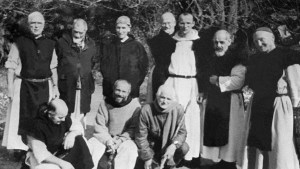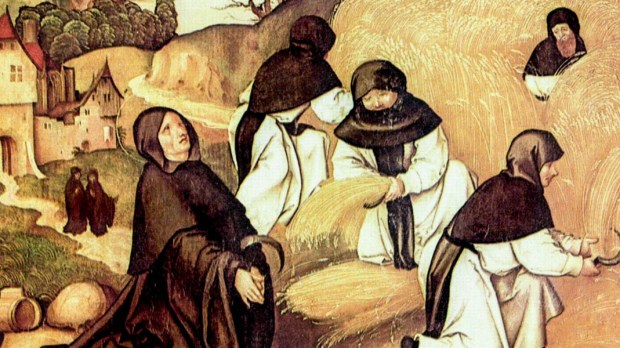A few centuries after the founding of the Benedictine Order, St. Robert of Molesme in France was appalled by the laxity of his fellow monks. He sought to return the religious order to a more strict adherence to the Rule of St. Benedict and gathered a handful of monks to establish a new monastery.
With the permission of the local bishop, Robert founded a new monastery near the French village of Cîteaux. From this village the order received its common name, the “Cistercians.” Shortly after its foundation, St. Bernard of Clairvaux assisted in the monastic reform and was one of the principal influencers who helped spread the order throughout Europe.
Later on, a branch of Cistercians separated themselves from the order and are more commonly known as the “Trappists,” named after their original abbey in France, La Trappe Abbey.
Here is a brief guide to the order, detailing the basics of this rich expression of religious life.
Names & Abbreviations: Cistercian Order, Cistercians of the Original (Common) Observance, O. Cist.; Order of Cistercians of the Strict Observance, Trappists, O.C.S.O.
Date of Foundation(s): 1098 (O. Cist.), 1892 (O.C.S.O)
Founder(s): Sts. Robert, Alberic and Stephen
Motto & Charism: Cistercium mater nostra, Latin for “Cistercium (Cîteaux) is our mother” (also, “work and prayer,” a motto from the Benedictine Order)
According to the Abbey of Our Lady of Dallas, “Our monastic life is centered upon the liturgy and the ancient practice of lectio divina, or the private reading and pondering of Holy Scripture. In addition to having designated times for private prayer, we celebrate together the Holy Sacrifice of the Mass and the Liturgy of the Hours daily. It is through prayer that we seek to raise our minds and hearts to God and live in union with Christ; for it is from him that we find inspiration for all our activities and the ability to discern the direction of our lives.”
Additionally, according to a Trappist community, “Sts. Robert, Alberic and Stephen founded the reformed monastery of Cîteaux in 1098. Their aim was to refresh the institutional forms of monastic life and to bring them into closer conformity both with the Rule of Saint Benedict and with the aspirations of the age. In particular this involved an emphasis on authentic poverty and simplicity even in the liturgy, manual work, non-involvement in secular affairs, and, at the level of the Order, mutual concern and supervision among the different monasteries, as a means of maintaining fervor.”
Examples of Cistercian Communities: Some Cistercian communities include the Abbey of Our Lady of Gethsemani, New Melleray Abbey, Abbey of Our Lady of Dallas, Valley of Our Lady Monastery, Atlas Abbey of Tibhirine, Trappist Abbey of Rochefort
Famous Cistercians: St. Bernard of Clairvaux, Bl. Eugene III, Monks of Tibhirine (depicted in Of Gods and Men), Thomas Merton

Read more:
Exclusive Look: Thomas Merton’s contemplative photography
Read more:

Read more:
Monks of Tibirhine recognized as martyrs, on way to beatification

